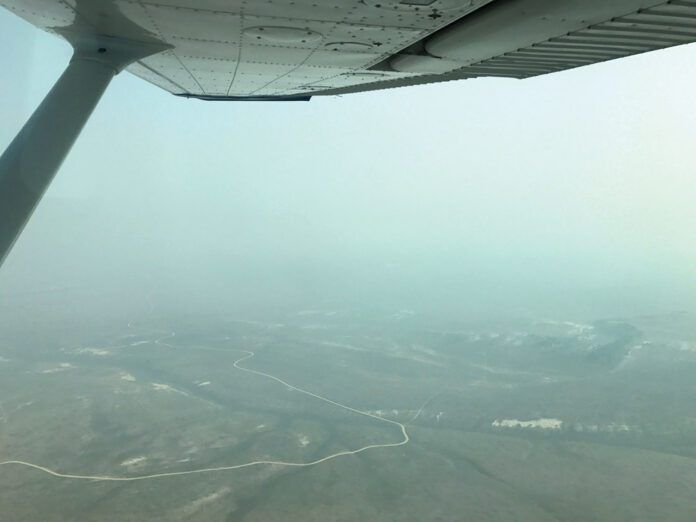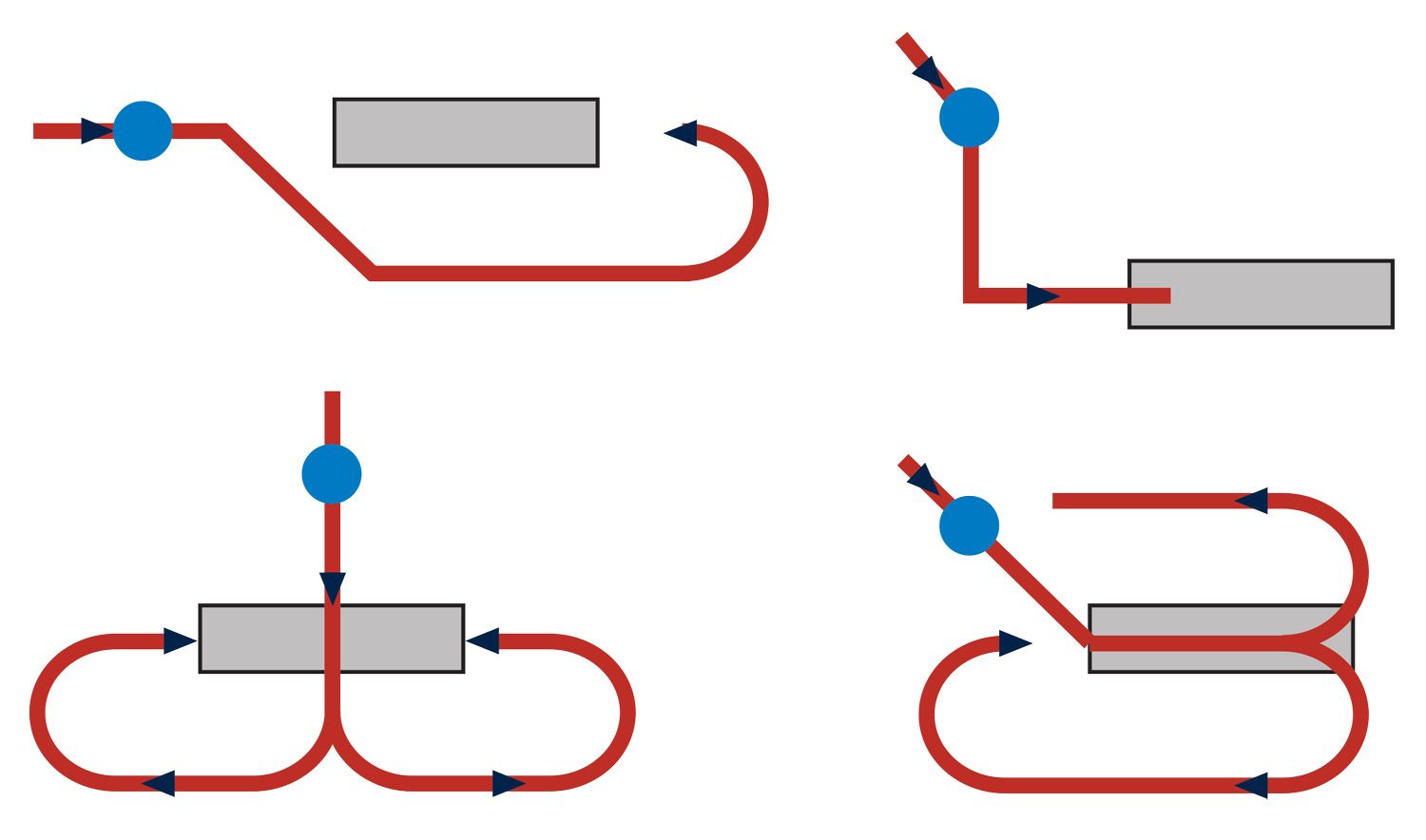
Tell me how to go missed from a circling approach,” the designated pilot examiner (DPE) asked the pilot during the oral portion of their checkride. The applicant didn’t know the answer, so the frustrated DPE asked a CFI standing nearby, who worked at the flight school, and got the same answer: “Huh?”
After the increasingly frustrated DPE asked the third unlucky nearby pilot, also a CFI, who said he didn’t know either, the DPE got angry that no one in the whole wide world seemed to know how to execute a missed approach while circling to land.
He got so angry, in fact, that the CFIs he grilled reported him to the FAA for being, uh, “scary” or “mean” or something, and the FAA investigated. The upshot: the DPE had to “take a little time out,” and not be a DPE for a while—grounded for his temper.
You may ask, “What is your point, Matt?” The point, thank you very much for asking, is “going missed” from a circling approach ain’t the same as executing a missed approach from, say, a straight-in approach, like an ILS or GPS-based LPV procedure. It’s not an obvious or easy maneuver. In many ways, it’s like calculating your own visual descent point (VDP) on a non-precision approach, and it takes a little thought. See the sidebars below for more on VDPs.
Missing The Circle
What’s so different about going missed on a circling approach versus going missed from a straight-in?
While circling, you execute a missed approach anytime you lose sight of the runway (not counting the short times when a wing might block your view). Am I going to be lined up with the runway when I “go missed?” Maybe, but for sure I can’t see the runway, which is why I’m bailing, going missed.
On an ILS with the weather below mins and at the DA/H, I never see the runway, so I go missed—and I’m (hopefully) lined up with the runway, no big jink to intercept the missed approach course.
When you miss the approach while circling, you’re supposed to climb and turn toward the landing runway and then intercept the missed approach course and fly it outbound.
Huh? Which missed approach course? The missed approach course for the instrument procedure I flew to some other runway. (This is all simple and obvious, if you’re Rainman. Otherwise, it takes a little pre-study to remember how to execute the missed approach procedure for, say, RNAV (GPS) Rwy 09, as you fly into a cloud while maneuvering to Runway 13 at Fargo, as ice builds on the lower windscreen, and there’s a Pilatus right behind you and other aircraft landing on the other runways, and the radio is busy with voices, etc., etc.
The FAA’s typical circling guidance will feature a chart like the one at left. What these diagrams never show is the likely missed approach point (MAP, the blue dots we added) and which way to turn—a generic diagram can only do so much.
Any missed approach procedure requires a climb, so get that started. Then turn toward the landing runway, join the miss outbound and fly it. This is where good situational awareness and prior planning pay off. — J.B.
Why Circle In The First Place?
Which brings up the question—why would anyone want to do a no-kidding circling approach? (vs. a practice one). Well, the tower might tell you to.
Once upon a time, back when I was in the U.S. Air Force, we flew a KC-135Q into Glenview Naval Air Station near Chicago, and the tower told us to circle to a different runway. As a new copilot, I had luckily, recently been studying the flight manual, and read about the circling approach—where we should use a certain less-than-full flap setting. While setting up for the maneuver, the aircraft commander called for “flaps full.”
I timidly said no, I think the flap setting is such-and-such. So he had the navigator look it up in the big ol’ manual, and I was right. (This was a miracle, and it was right near Christmas. In fact, now, every time a tanker flies a circling approach, an angel gets its wings). Then we flew over the runway perpendicularly, using timing, in seconds, to time the turn, get spacing before turning 90 degrees to downwind—and it all worked out fine.
After that, I became really interested in circling approaches, because I realized they were kind of unusual—if my old flight commander/boss (and the experienced navigator) didn’t know how to do one, there must be something special about them.
And there is. When circling, I gotta get under the weather, and then maneuver to line up with the landing runway at the right height and airspeed, preferably with the gear down and stuff and then land. All the while looking outside, versus inside. Without practice and pre-studying, it’s quite unusual. While on the instrument approach, it’s all “instruments, instruments, instruments,” and then suddenly “VFR, heads up, look outside—no, not at that runway—the other one!” Plus, the tower gives directions like, “Cleared to circle northwest,” etc., and a pilot has to quick think, “Where is ‘northwest?’” It’s a kinda general command, versus, “Cleared the ILS to Runway 18,” etc.
Circling For Fun
I was out flying circling approaches the other day at Fargo’s Hector International. (Fargo, like the movie. There’s absolutely no truth to the vicious rumor that the FAA has authorized a temporary name change to “Hectic” International, what with all the traffic in the pattern. Like huge, scary Reaper drones with nobody aboard. There also are not-so-huge-but-still-scary Cessna 172s, Pilatuses, King Airs, bizjets and carriers like Allegiant Air, Brickyard whoever, United, UPS and FedEx.)
I stayed in the local area and shot three instrument approaches to Runways 18, 27 and 09, circling each time to Runway 13. Why do that? Because the wind was blowing 130 at 20, gusting 25, and there’s no instrument approach to Runway 13, is why. Plus I needed the practice, big-time. Who knew?
I try to learn something every flight, and on this flight I learned—well, I learned some humility. I found out that when you shoot the RNAV (GPS) procedure to Runway 09, the tower tells you to “circle northwest of Runway 13, make a right base for 13, cleared the option,” etc. I was stumped. “Right base?”
I had pre-thunk that if I was heading 090 degrees for Runway 09, and then turned right for Runway 13, I’d end up on a LEFT base for that runway. So I said to the tower, “Do you mean LEFT base for Runway 13, is that correct?” There was a long pause, and then the tower said, “Make a straight-in for Runway 13,” and after breaking off the approach to Runway 09 and “circling,” that’s what I did, made a “straight-in” to Runway 13. Later, I looked closer at the airport diagram, and realized that unless I flew quite a ways past the threshold of Runway 09, and then hooked a sharp right for Runway 13, why—surprise!—I’d indeed be making a right base for 13, sort of, or at least a straight-in, but I’d never be on a left base. I turned right well before the threshold of Runway 09, and therefore it was impossible to make a left base for Runway 13.
Runway 13 is offset to the right, past the approach end of Runway 9. This is all obvious to a person who has studied the airport diagram, and I was not that person.
Why We Practice
Did I mention my first circle of the day, from the ILS/LOC Runway 18 approach, circle to Runway 13? Runway 13 was hidden, it turned out, way, way down there past the control tower, off in the haze. The tower didn’t know I had trouble picking it out of the haze amid the ground and mental clutter, and since this is my “home field,” I didn’t tell them. But when they told me I was clear to “circle northwest for Runway 13, cleared the option,” I wondered if I could get away with a radio call like, “Tower, let’s say someone wanted to know where Runway 13 was—exactly—what would you tell them?” So I learned that runway diagrams are my friend, and I should “get smart” on them.
Oh, yeah, so I’m shooting approaches and of course have to look to the right on the plate and read the circling mins, not the ILS or RNAV mins, lest I—yikes!—go below the circling MDA, which I did slightly once, but caught right away and blasted back up the 80 feet or so that I sinned.
I guess that’s why I’m out there practicing.
Still, it’s one thing to nail the circling approaches at your home airport, since it’s the one you use most often. That experience definitely can come in handy some dark and stormy night. But prior planning prevents poor performance. (I just made that up.) Unless ATC springs it on you at the last moment—you can decline the honor—get a firm handle on the maneuver before you cross an initial approach fix. Know which way you’ll be turning and where the landing runway will be when you break out. It’s the reference point you have to use to start the miss before turning onto the missed approach course when you reach it. Practice the mental picture, not just the flying.
Okay, when would you “go missed” on the ILS or LOC Rwy 22L at KJFK, Kennedy INTL? Well, let’s see, the localizer MDA is 460 (447 AGL), so put 447 over 300 and get what, 1.5? One point five what? One point five miles from the runway threshold, i.e., not 1.5 DME.
So if I’m at the MDA of 460 MSL (447 AGL) but not in a good position to land at 1.5 miles from the runway, I’m going missed—buh bye. Why? Because if I try to land after flying beyond that point, the descent to the runway gets, to put it in scientific terms, “all kinds of steep.” Yes, yes, I gotta fly to the missed approach point (MAP) before making any turn, blah blah blah, but still—the VDP is basically the missed approach point.
 According to the Aeronautical Information Manual (AIM), “a visual descent point (VDP), identified by the symbol (V), is a defined point on the final approach course of a non-precision straight-in approach procedure from which a stabilized visual descent from the MDA to the runway touchdown point may be commenced. The pilot should not descend below the MDA prior to reaching the VDP. The VDP will be identified by DME or RNAV along-track distance to the MAP.”
According to the Aeronautical Information Manual (AIM), “a visual descent point (VDP), identified by the symbol (V), is a defined point on the final approach course of a non-precision straight-in approach procedure from which a stabilized visual descent from the MDA to the runway touchdown point may be commenced. The pilot should not descend below the MDA prior to reaching the VDP. The VDP will be identified by DME or RNAV along-track distance to the MAP.”
Additionally, “Pilots not equipped to receive the VDP should fly the approach procedure as though no VDP had been provided. Further, “On a straight-in non-precision IAP, descent below the MDA between the VDP and the MAP may be inadvisable or impossible. Aircraft speed, height above the runway, descent rate, amount of turn, and runway length are some of the factors which must be considered by the pilot to determine if a safe descent and landing can be accomplished.”
The profile view above is extracted from the ILS/LOC Rwy 22L procedure at JFK and highlights the VDP established for the approach in red. — J.B.




